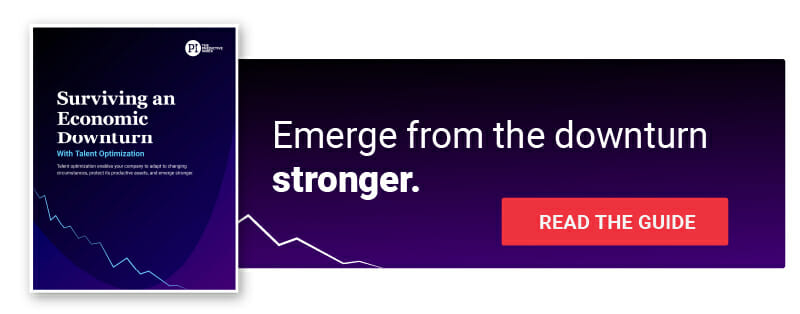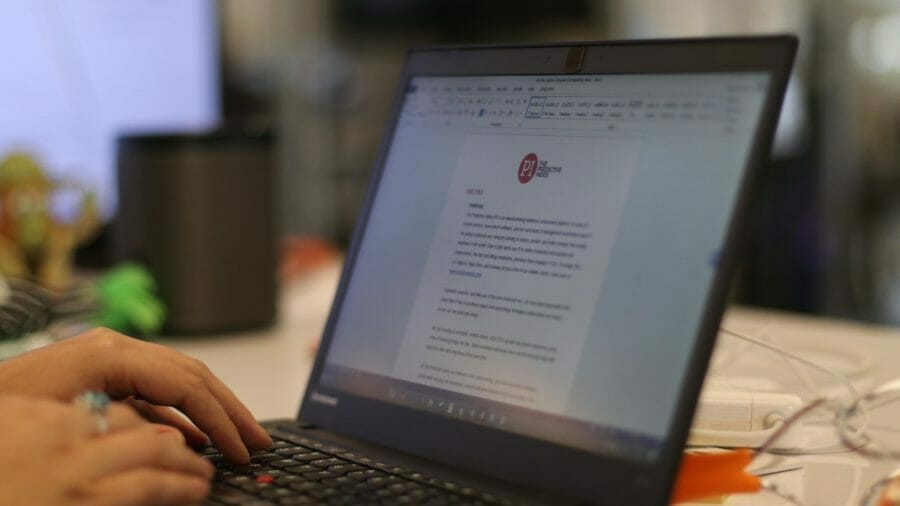Measuring employee engagement is a different practice during any recessionary period, let alone one as life-altering as this one. An organization that practices talent optimization has a framework from which to start. But to diagnose staff sentiment during a crisis, you must:
- Determine the most efficient way to collect people data.
- Pinpoint where engagement may be most heavily impacted.
- Fix pain and friction.
- Allocate executive time appropriately.
On average, senior leaders spend 61% of their time solving people problems. But these aren’t average times, and that might not be a realistic allocation given how time-poor many executives are right now. A streamlined strategy for measuring engagement might go as follows:
Determine the most efficient way to collect people data.
Engagement data needs to be measured extra carefully—and likely differently—given the delicate nature of the current pandemic and its socioeconomic wake. That might mean gauging how people are feeling more frequently, or with more targeted questions.
Whereas you might normally measure engagement annually, you’ll now want to adjust that cadence to three-month intervals or even more often. This will help you determine whether your talent will come out of the downturn energized, disengaged, or somewhere in between.
No one knows how long the social distancing (and remote work) mandates related to COVID-19 will last, nor the true economic impacts. What we do know is that engaged employees are emotionally committed to your organization’s success—and that will bolster your ability to move forward.
Some personalities and work styles may adjust more readily than others. The adjustment can manifest in many ways, including a subconscious pressure to be “always on” that can lead to a whole new series of concerns (i.e., lack of balance, and eventual burnout).
So it becomes a matter of taking frequent temperature checks and protecting productivity—initiatives more easily tackled if a healthy culture is already in place.

Pinpoint where engagement may be most heavily impacted.
Not every organization is fully remote, but everyone is experiencing some form of culture shock. That will weigh more heavily on some corners of the business than others. To pinpoint where engagement may be most heavily impacted, start by asking yourselves questions like:
- What’s causing the initial friction?
- Did leadership trust take a big hit because of a decision?
- Are employees feeling like they don’t have the resources they need?
- Are managers pressing too hard?
- Are people turning on each other?
“If you think about a recession, it’s about financial capital downturns and how to manage them,” Dr. Greg Barnett, SVP of Science at The Predictive Index, said. “Diagnose is about human capital downturns and how to manage those.”
Fix pain and friction.
To keep operations afloat, you might have had to slash the budget, remove company perks, or, most drastically, do a reduction in force. Following these changes, people may be confused, uneasy, anxious, and in some cases, outright resentful.
With tough decisions made, you’ll need to determine the levels of pain and friction that exist, so you can begin to address and fix them. An employee experience survey can help you:
- Allocate your resources and attention to the jobs that need it most.
- Delegate and determine where managers need to be coached to step up.
- Identify where trust and culture have eroded most within the company.
- Restore high-performing teams where collaboration has stalled.
This exercise isn’t just about identifying low scores or pain points. It’s safe to assume everyone at your company is struggling on some level with this new normal. It’s imperative that you acknowledge this reality—otherwise you’ll risk coming off obtuse or out of touch.
Staff aren’t adjusting solely to remote work, but also close quarters and a range of feelings derived from unprecedented social isolation.
As PI CEO Mike Zani said, “There are people who live in 400-square-foot apartments and they’re not allowed to get out. They’re not allowed to go for a meal. They might not even have a full kitchen, and now they’re working from home.”

An engagement strategy is essential during a recession.
You’ll need to continue to assess employee engagement data in subsequent installments throughout the duration of the crisis. But step one is determining where exactly things are receding, acknowledging why it happened, and establishing a plan for how morale and productivity will be restored.



